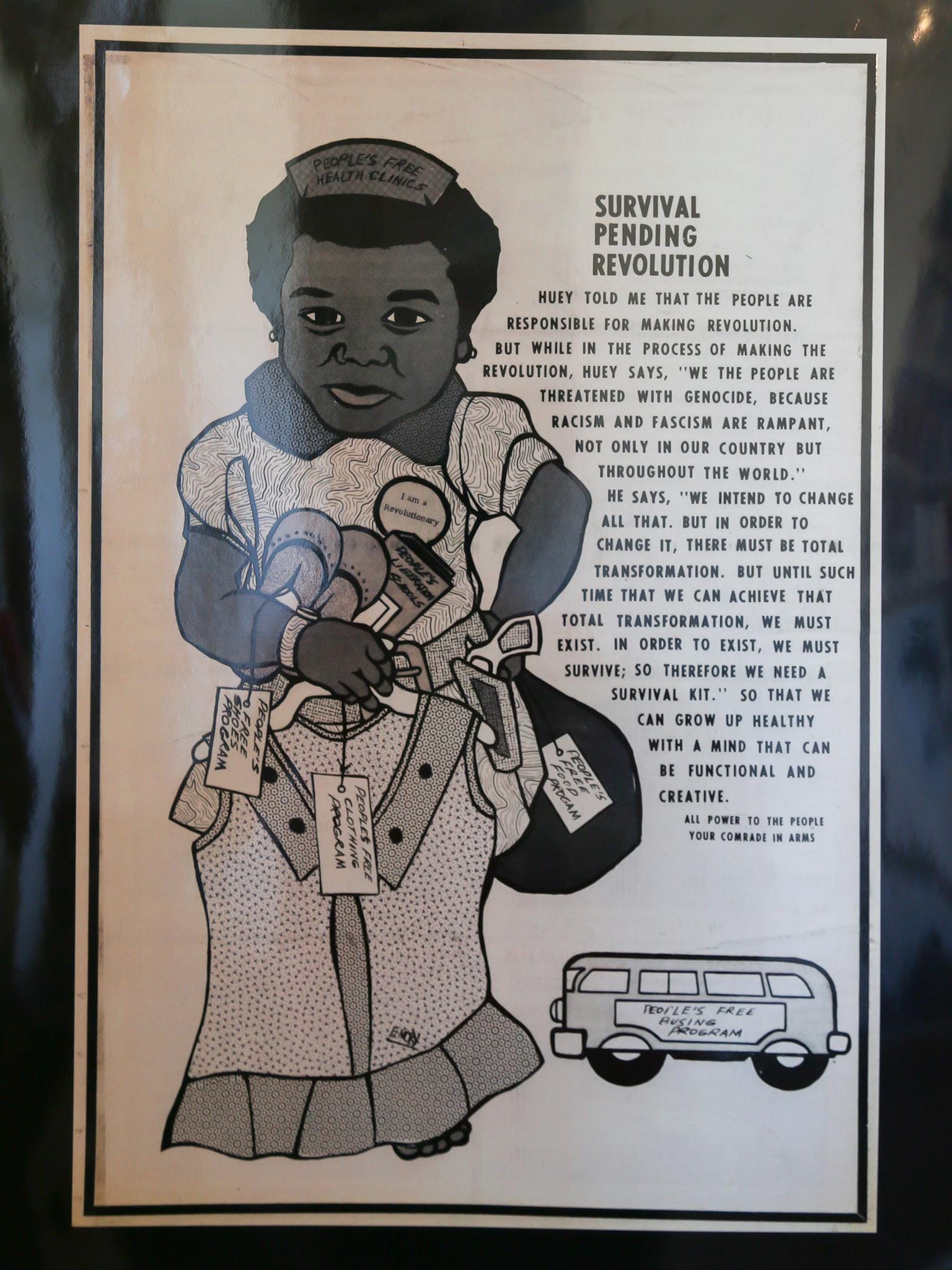As with any political or social movement, visual art, from murals to posters to newspaper illustrations, played a central role in the Black Panther’s efforts to promote revolutionary change. While the party was snuffed out of existence decades ago, their artistic legacy lives on in a permanent art installation established right where the work began, with an emphasis on the sometimes under-recognized role played by women.
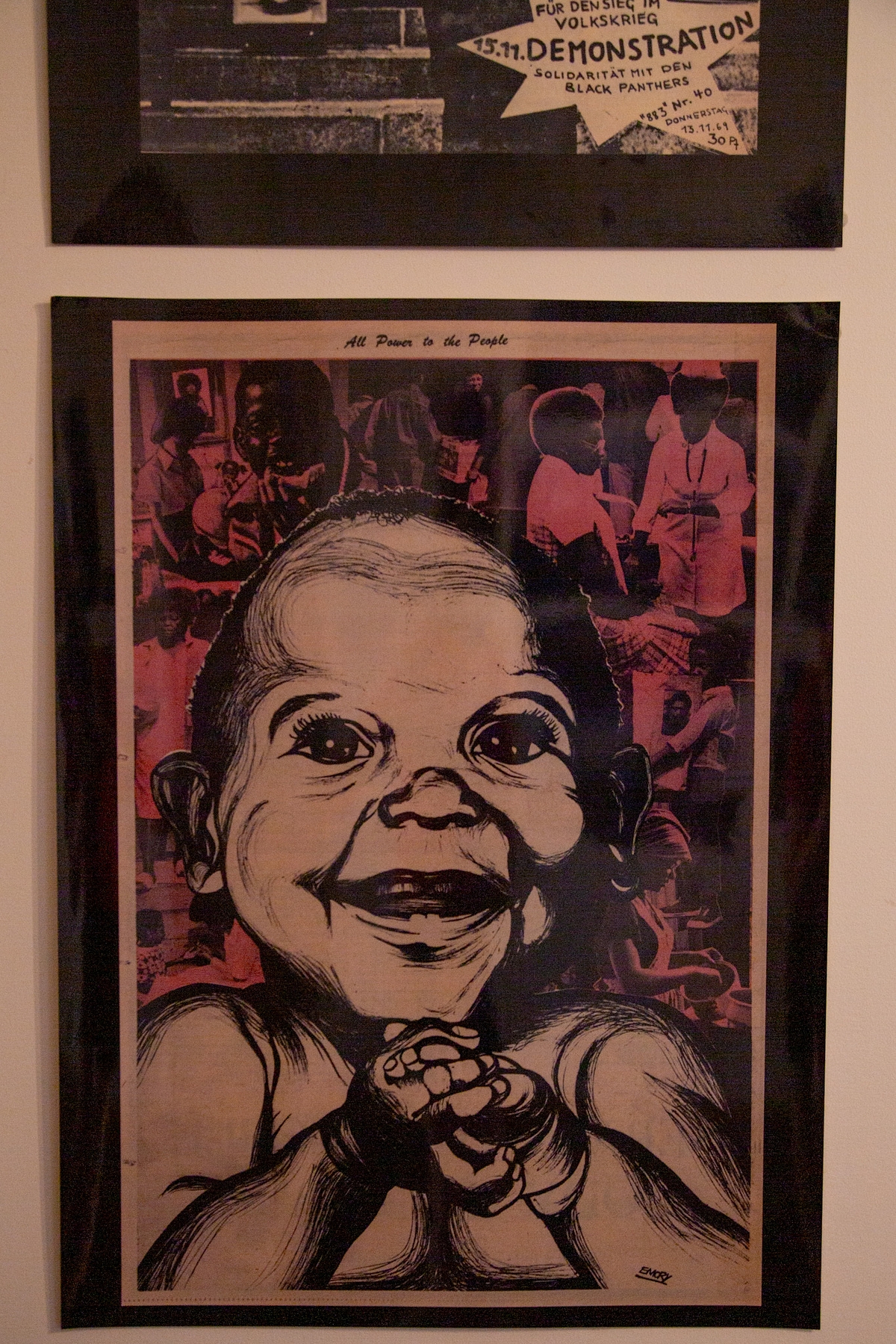
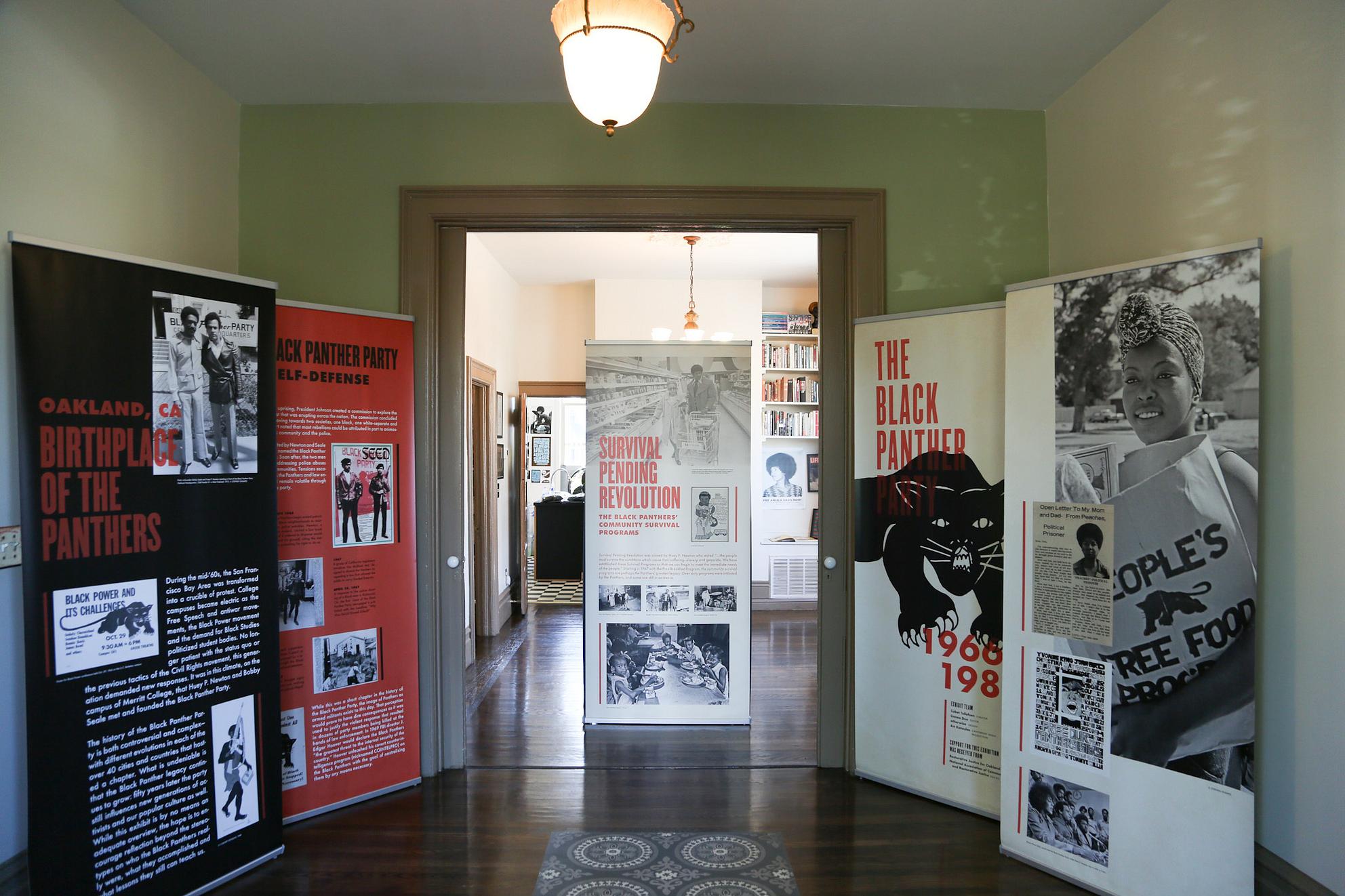
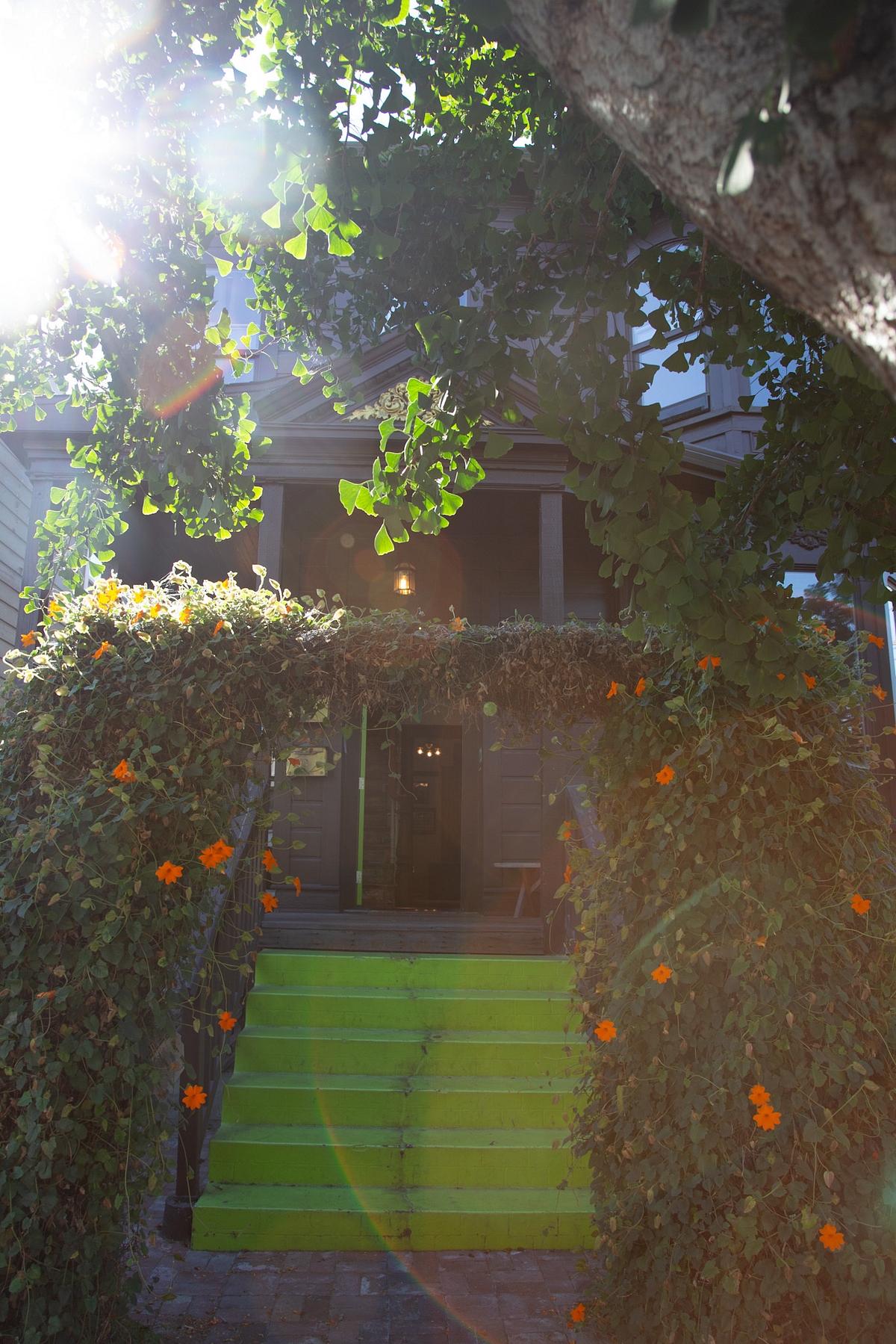
The nonprofit center — the West Oakland Mini Museum and Mural Project — officially opened on Juneteenth weekend of 2021, the brainchild of curator Jilchrista Vest and archivist Lisbet Tellefsont. It is housed by, well, a house, but a rather special one, a Victorian style home built circa 1895 situated in the adorable, if confused and continually gentrifying, Lower Bottoms neighborhood of West Oakland. (This author, who has lived around the corner for eight years, is biased.)
The neon-staired home, pictured above, sits just blocks away from the party’s former headquarters on on Oakland’s Peralta Street and across from the spot where Huey Newton was shot to death. The home has a full two sides painted in murals, visible to all, and a closer look reveals that the home has been turned into a museum.
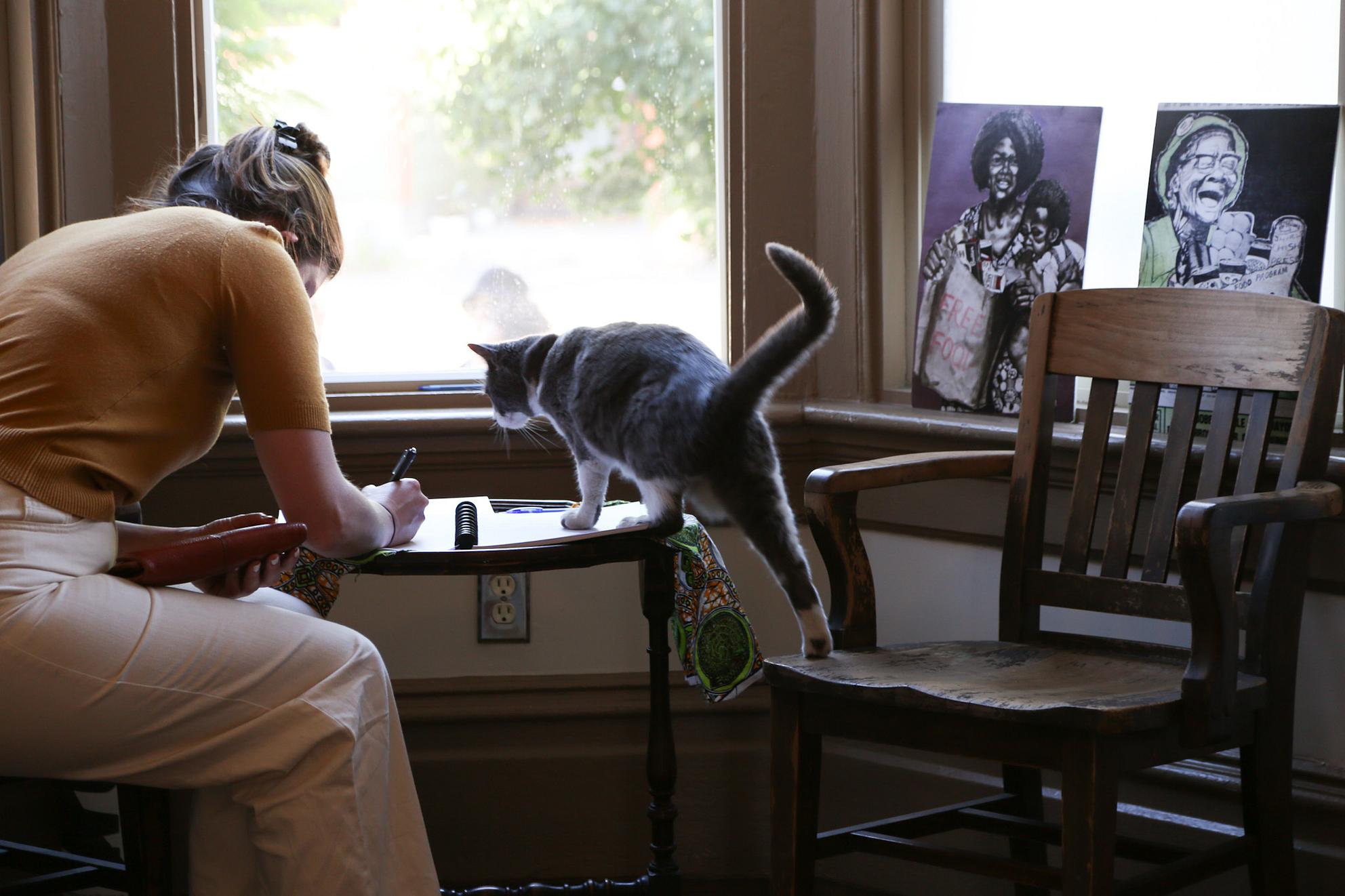
As I wandered in for a visit through the open front door (barefoot, as guests are asked to leave their shoes on the porch) and scanned a Venmo QR code to make my donation, I began to take in the home and the group of guests finishing their tour. I’d made my appointment via text earlier in the day, as their website requests; Vest was deep in the midst of a conversation with several other visitors.
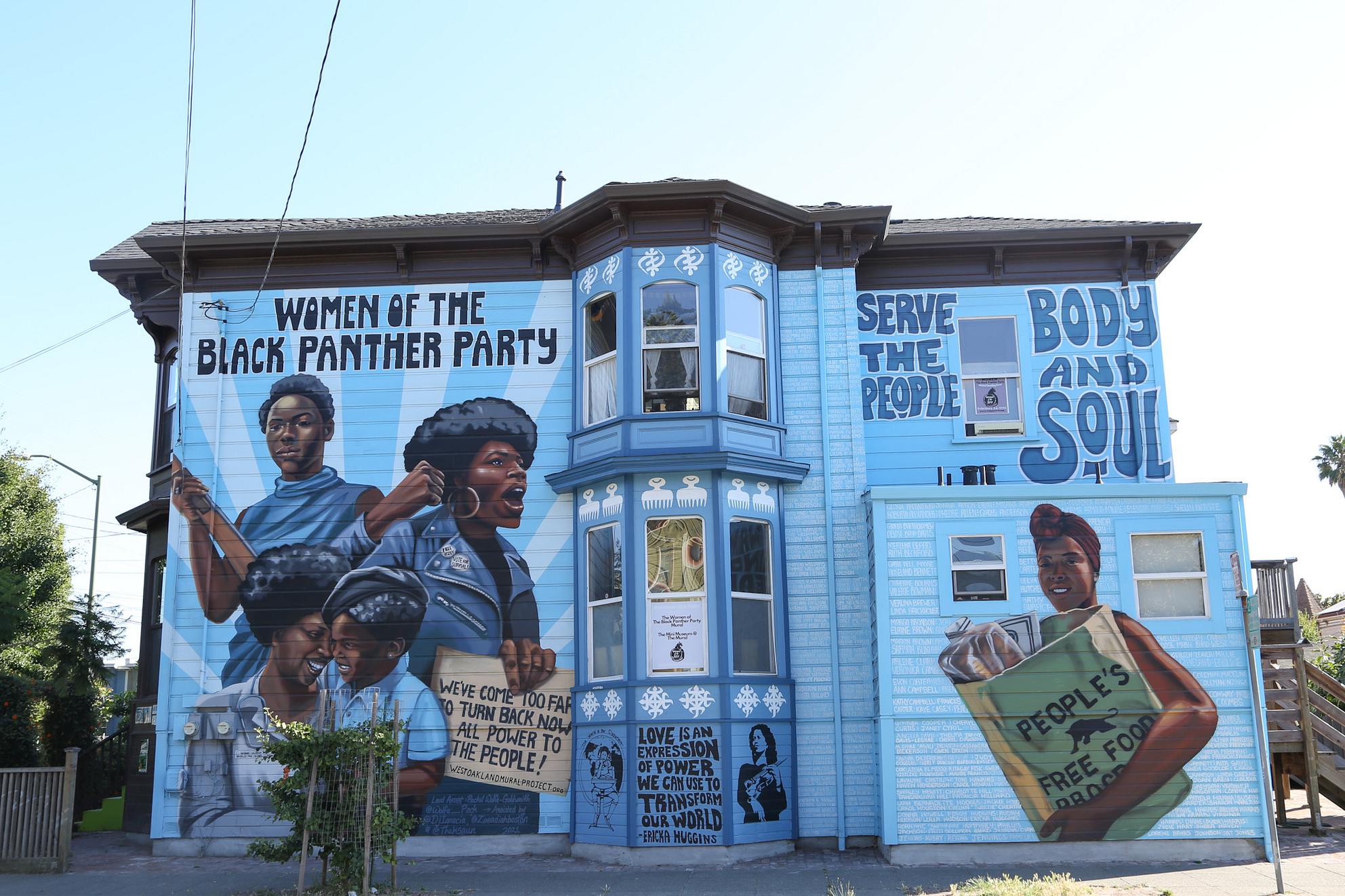
I read and snapped photos, continuing to eavesdrop. One woman expressed gratitude that a mural (pictured above) depicted only women with darker skin tones, as too often that representation is simply not there, showing lighter skinned women solely. The mural, painted by Rachel Wolfe-Goldsmith with assistance by @DJIgnacia, Zoe Adaih Boston, and @TheKsaun, depicts larger-than-life women fighting injustice, caring for a child, and sharing free groceries. It also hosts hair picks, quotes from former party leader Ericka Huggins and Sandra Bland, and the names of hundreds of female members of the party.
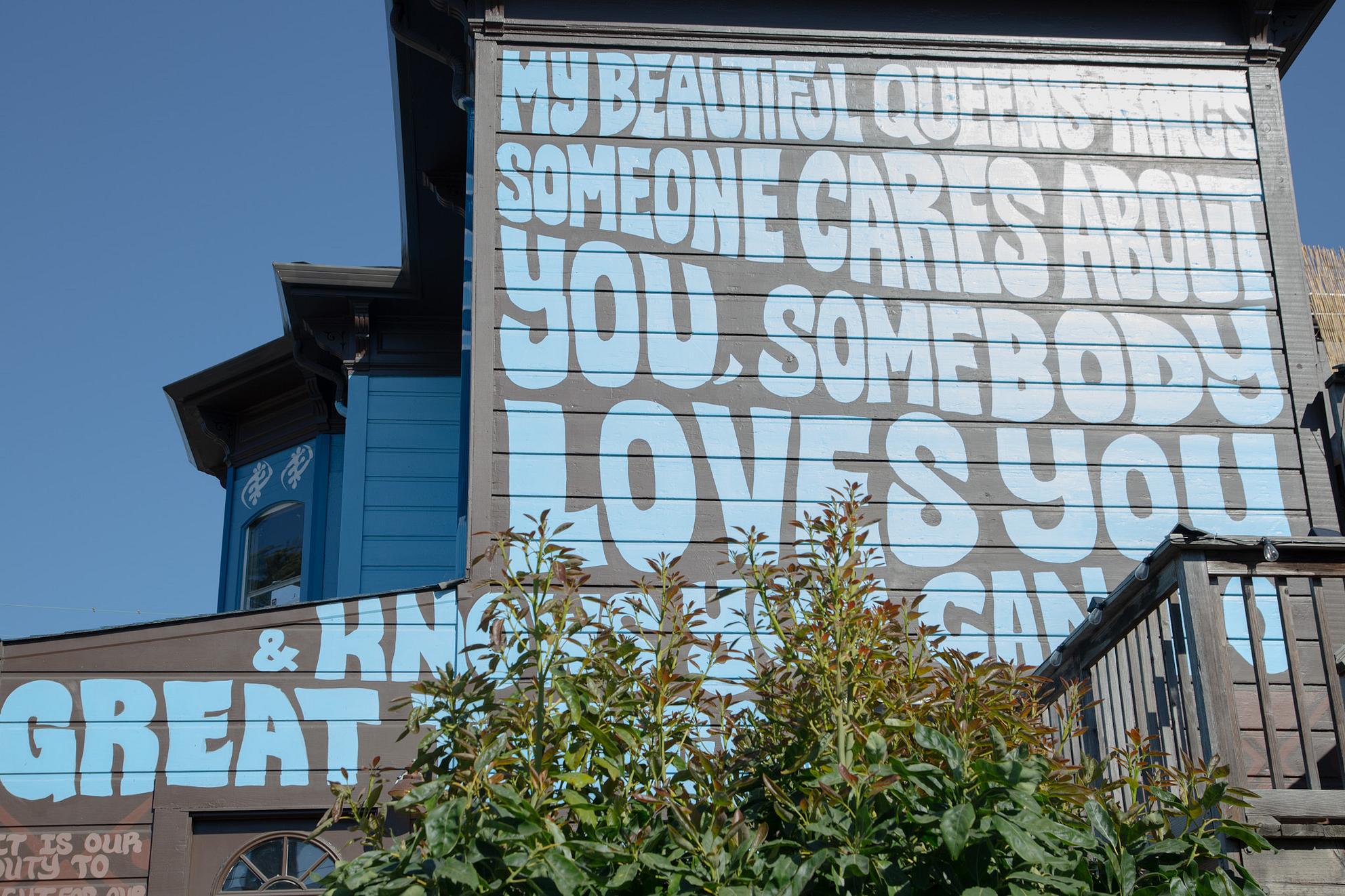
The nonprofit’s site says they work to acknowledge “the role women played. This project is to remind us that The Black Panther Party was formed and consisted of young humanitarians, gathered to protect and better the lives of poor and oppressed people throughout the world.”

The exhibit highlighted the enormity of the community undertakings: in its 1960s-’70s heyday the party had 65 different health-oriented community care programs.
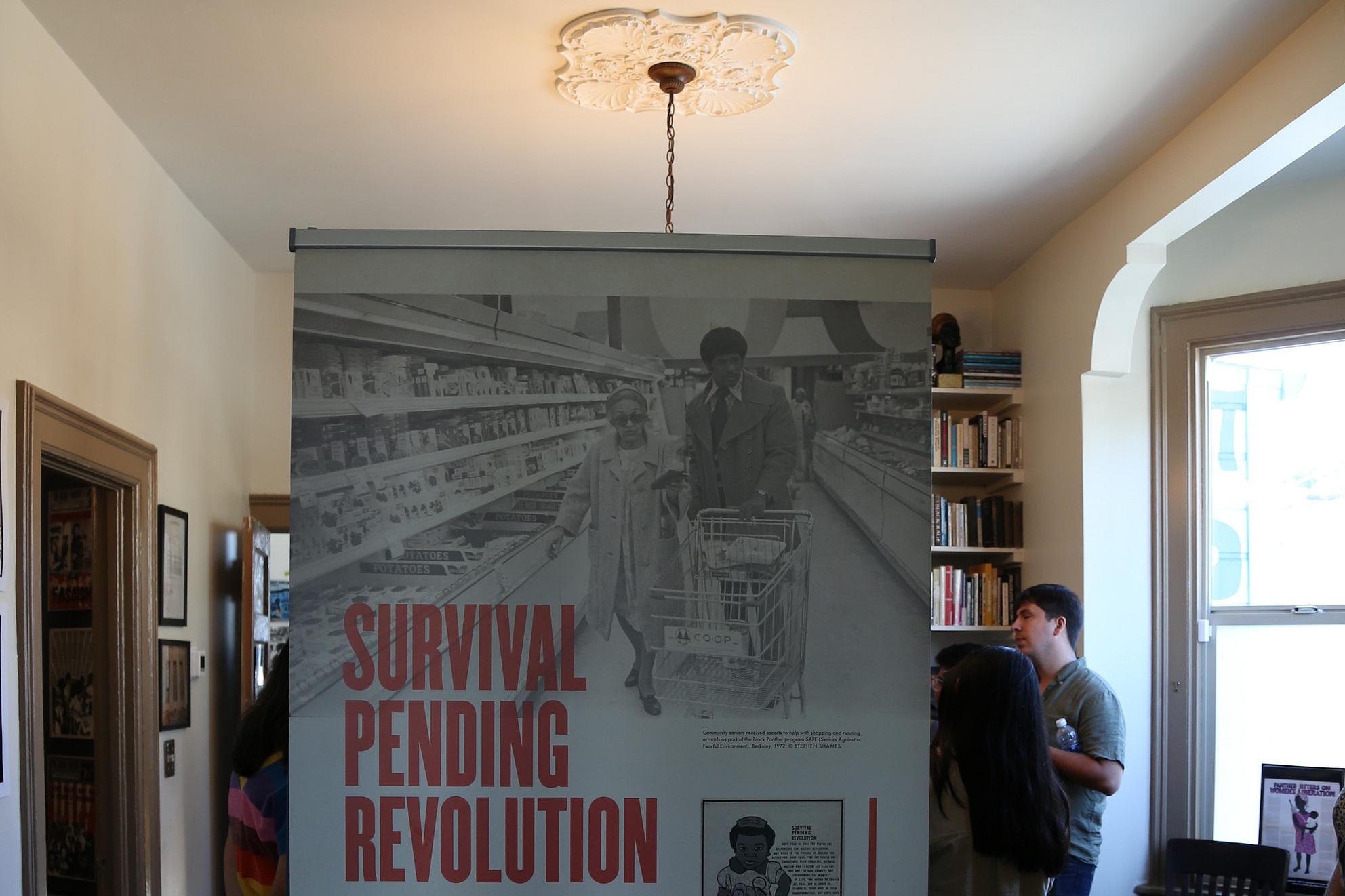
It also reflects how the need for community care continues: The world is burning, we’re more isolated than ever, and most of us cannot care for ourselves the way we need to alone.
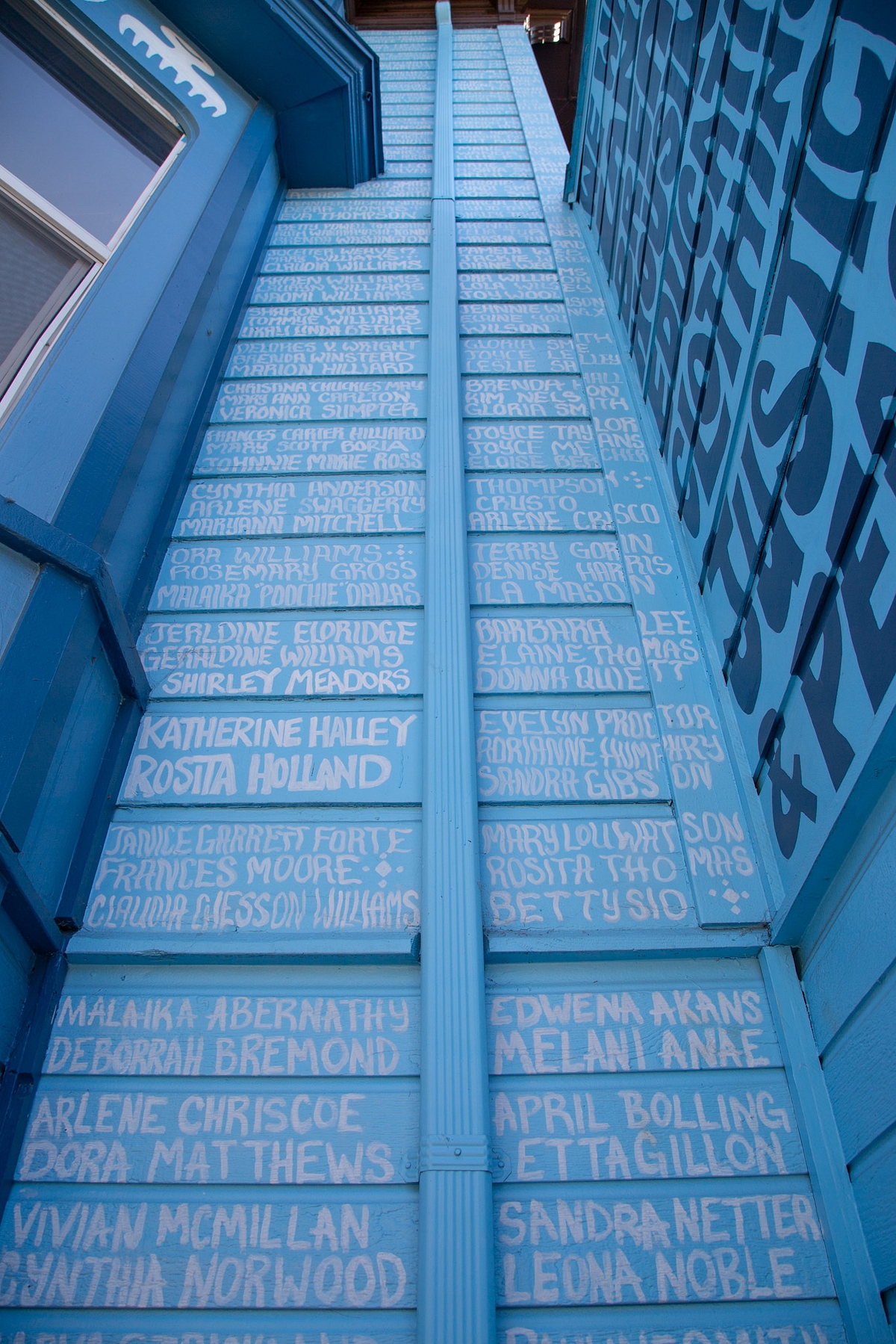
As I walked out, preparing to take photos of the mural, an unscripted example of that need, based on knowing the neighborhood, unfolded out on the street. A man stood in the middle of the intersection pressed against the front of a car. The young woman behind the wheel looked confused, alarmed.
“I love you, do you hear me?” he asked her through the glass.
“Victor. That’s your name, right?” Vest hcalled to him, then helped to guide him out of the street and let the woman drive away.
Moments later another car approached, another young woman alone behind the wheel. The scene replayed.
“That’s my neighbor, let her go,” said Vest.
“I love you, do you hear me?” Victor asked.
